Control of a Boost Converter to Improve the Performance of a Photovoltaic System in a Microgrid †
Abstract
:1. Introduction
2. Boost Converter
3. Results
4. Conclusions
References
- Benavent, J.M.; Figueres, E.; Garcera, G.; Pascual, M. Robust Model-Following Regulator for Average Current-Mode Control of Boost DCDC Converters. In Proceedings of the 2005 IEEE International Symposium on Industrial Electronics, Dubrovnik, Croatia, 20–23 June 2005. [Google Scholar]
- Carrillo, F. Transition controllers between Island and Grid mode of a Photovoltaic system in a Smart Grid. In Proceedings of the VIII Congreso Internacional de Ingeniería Electromecánica y de Sistemas, CDMX, Ciudad de México, Mexico, 17-21 October 2016. [Google Scholar]
- Mohan, N. Power Electronics, Converters, Applications and Design, 3rd ed.; Wiley: Hoboken, NJ, USA, 2003. [Google Scholar]
- Garcerá, G.; Figueres, E.; Abellán, A. Conversores Conmutados: Circuitos de Potencia y Control; Universidad Politécnica de Valencia: València, Spain, 1998. [Google Scholar]
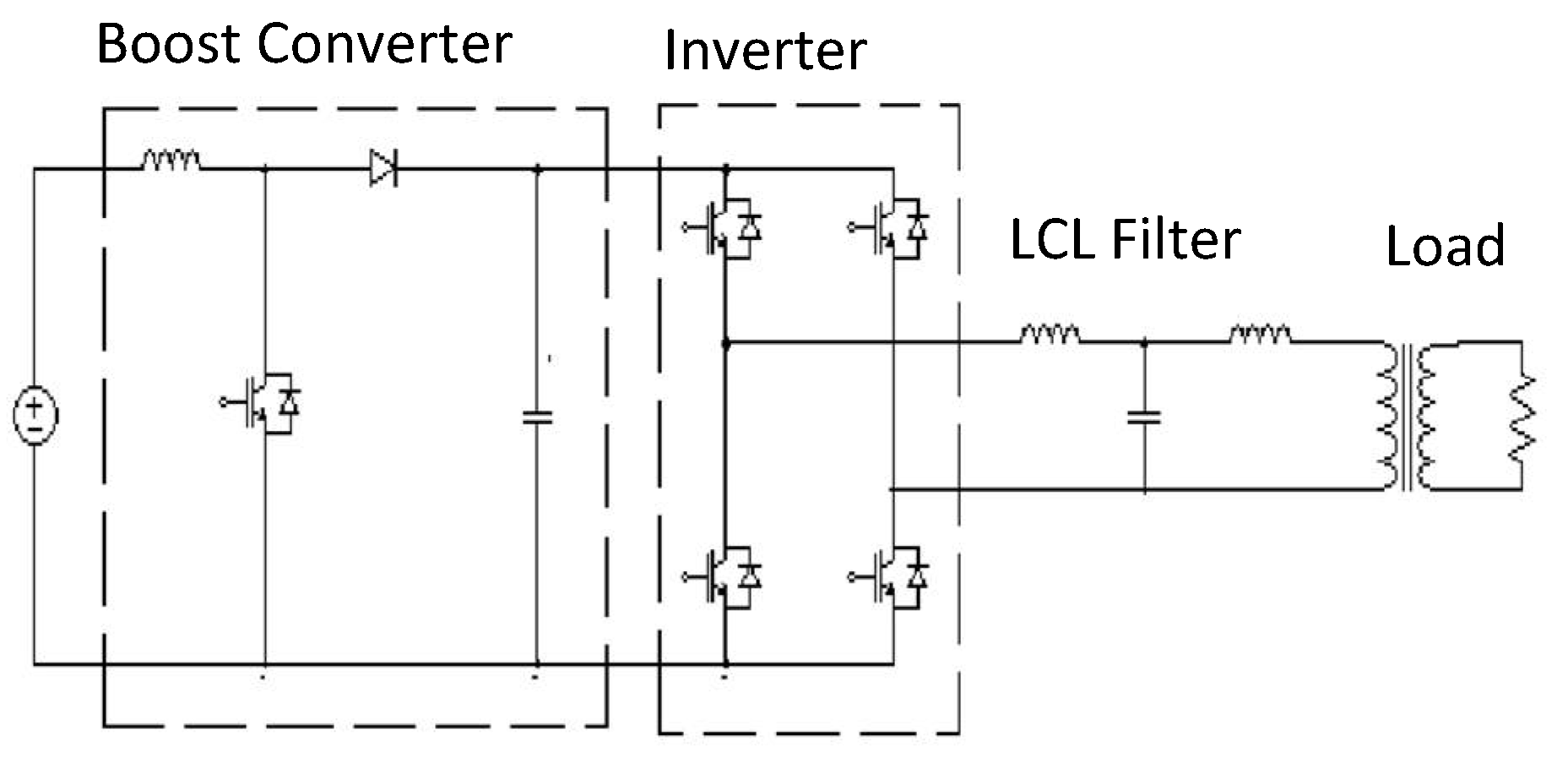
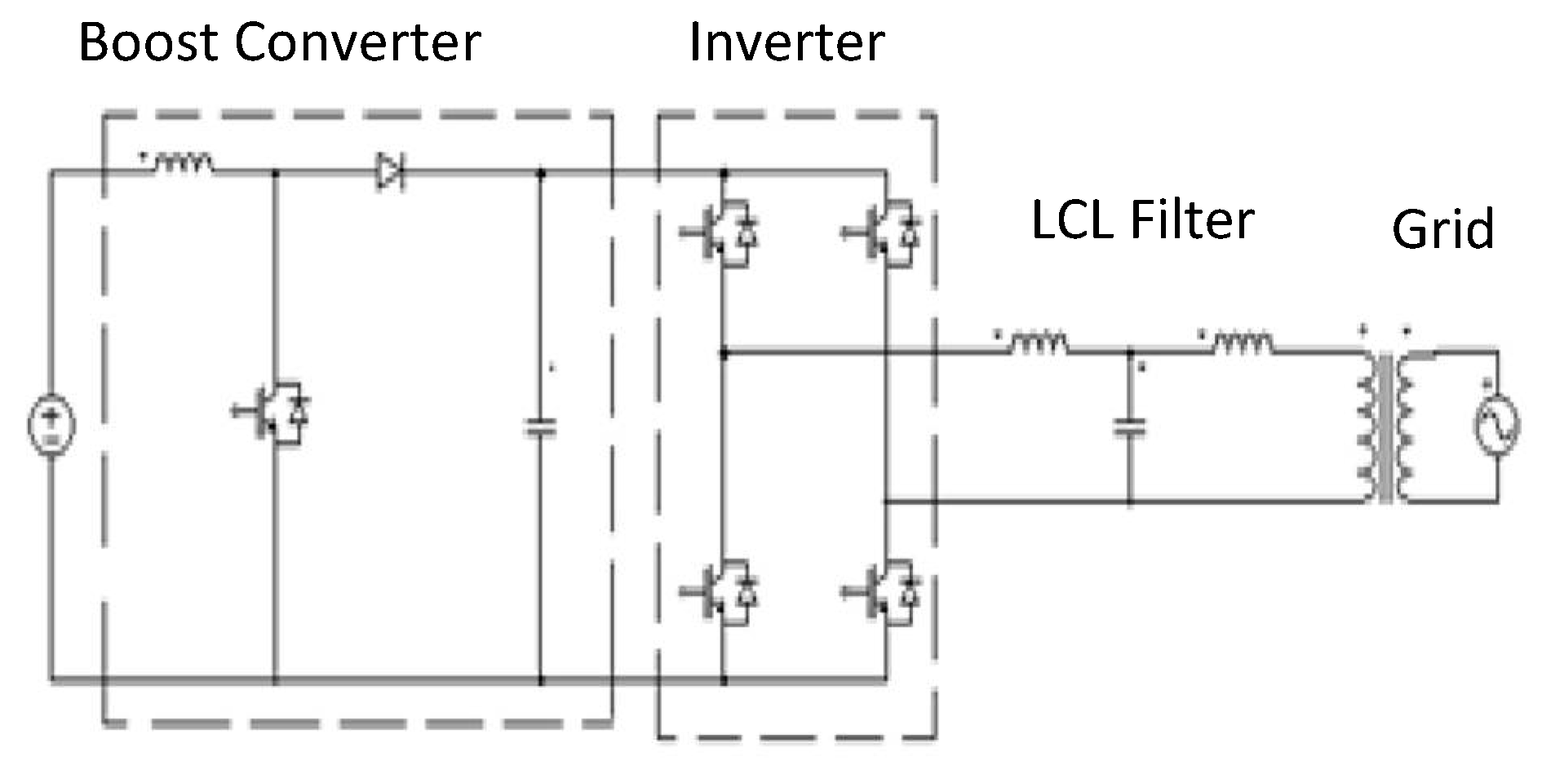


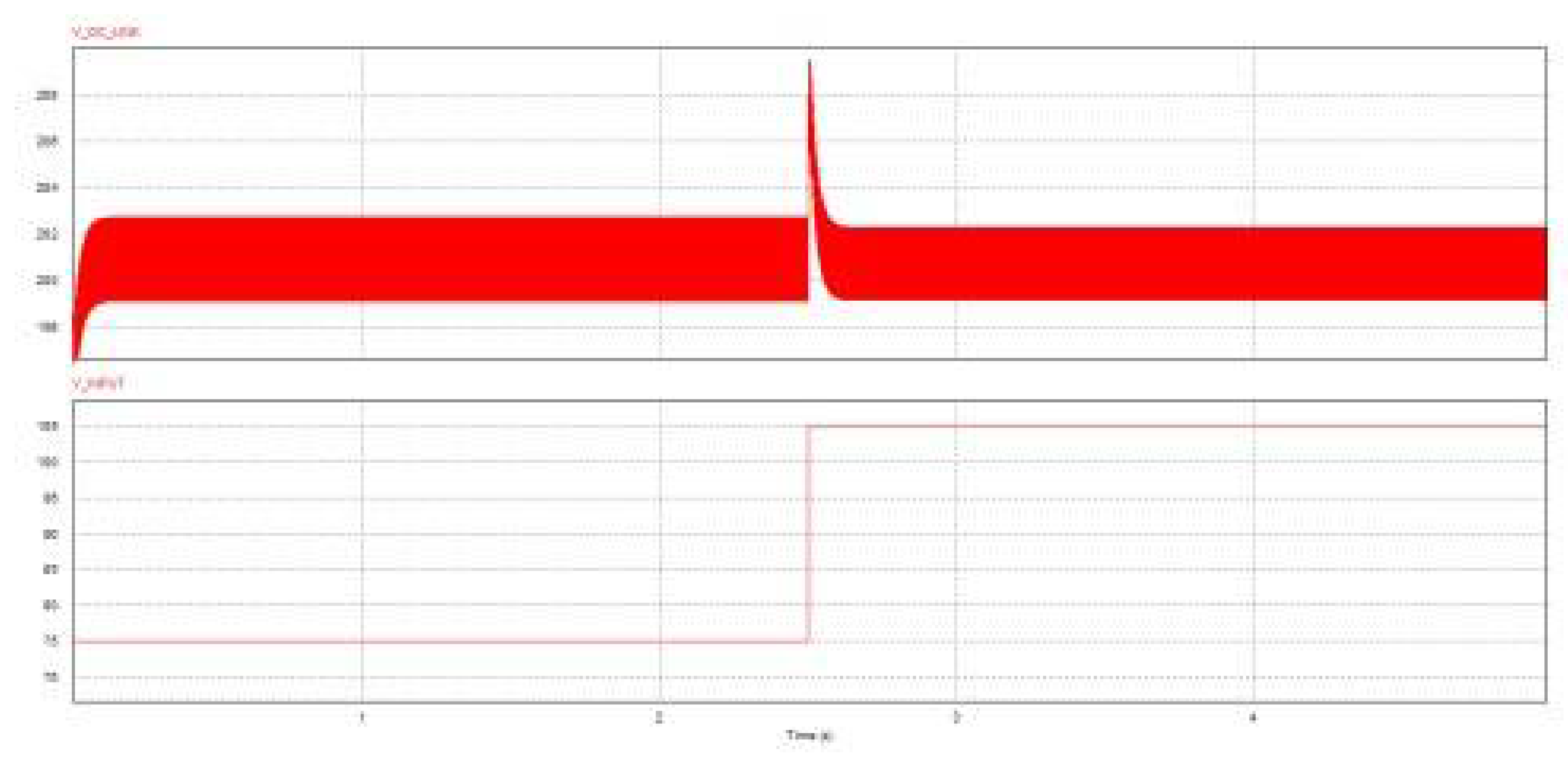
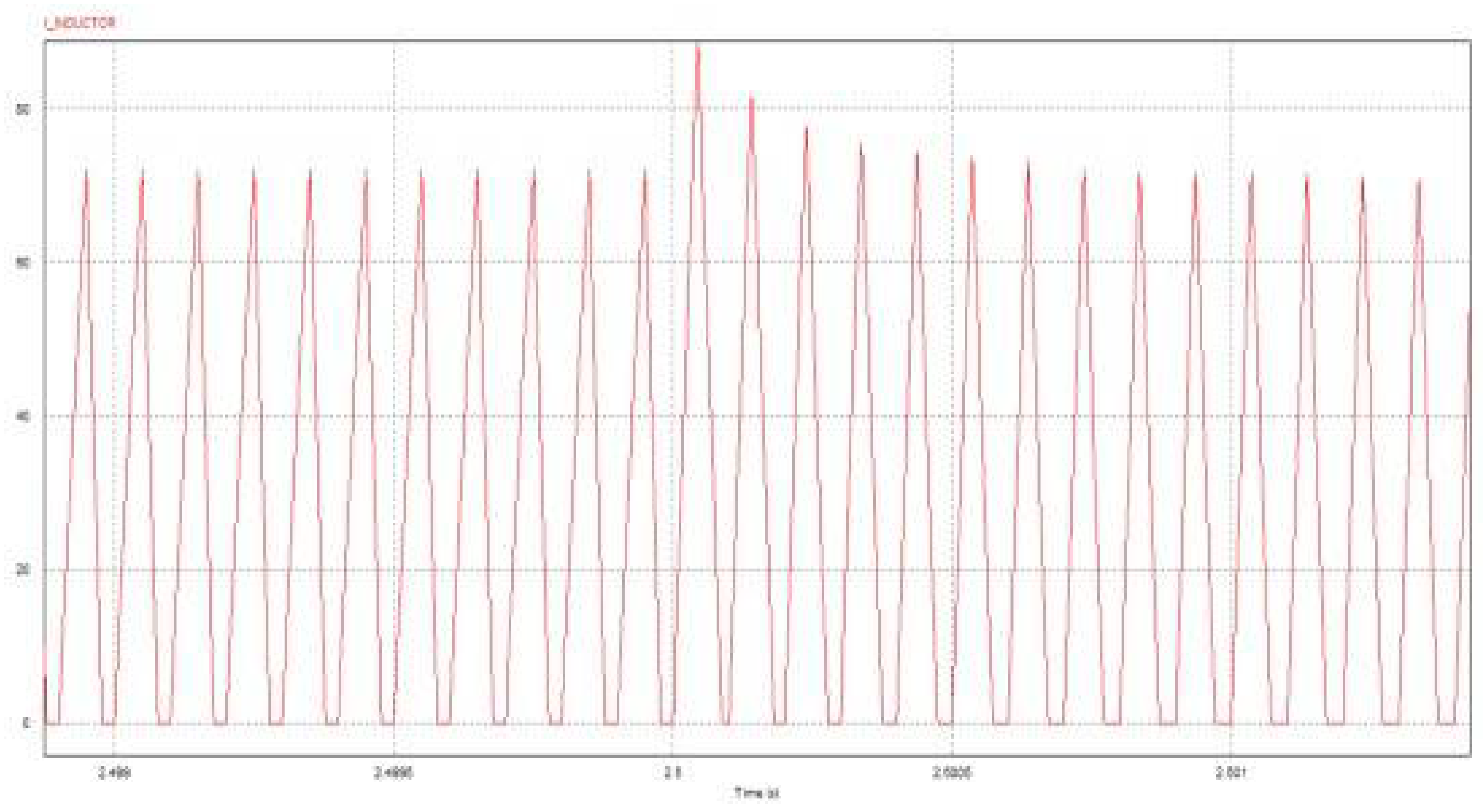
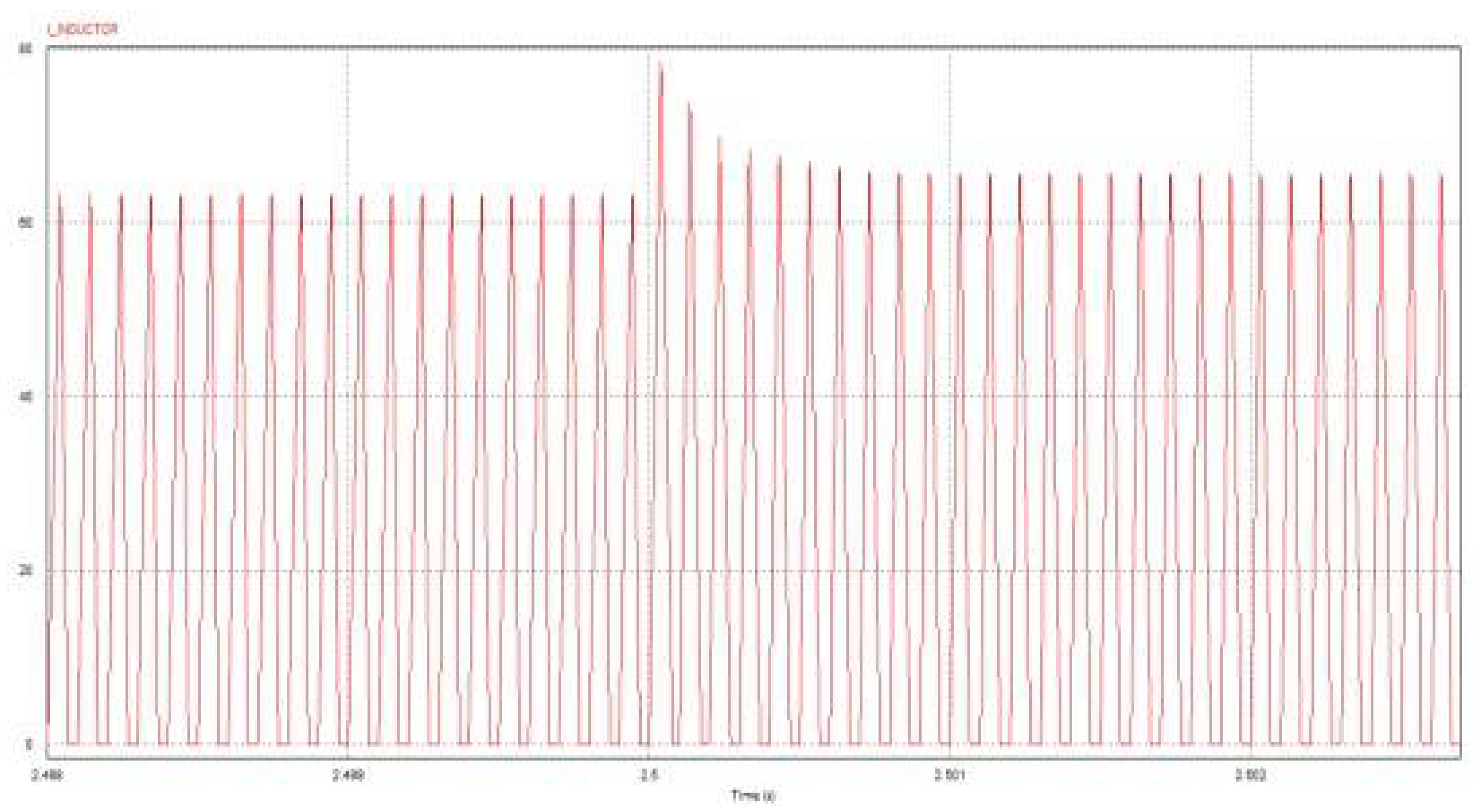
| Element | Value |
|---|---|
| Output power, Pout | 2000 W |
| Output voltage, Vout | 200 V |
| Output current, Iout | 10 A |
| Load resistance, RLOAD | 20 Ω |
| Inductor resistance, RL | 75 mΩ |
| Inductor, L | 50 μH |
| Capacitor resistance, RC | 50 mΩ |
| Capacitor, C | 1.1 mF |
Publisher’s Note: MDPI stays neutral with regard to jurisdictional claims in published maps and institutional affiliations. |
© 2018 by the authors. Licensee MDPI, Basel, Switzerland. This article is an open access article distributed under the terms and conditions of the Creative Commons Attribution (CC BY) license (https://creativecommons.org/licenses/by/4.0/).
Share and Cite
Fong, M.Á.A.; Rivas, J.J.R.; Castillo, O.C.; Gonzalez, R.O.; Barrera, J.C.T. Control of a Boost Converter to Improve the Performance of a Photovoltaic System in a Microgrid. Proceedings 2018, 2, 1270. https://doi.org/10.3390/proceedings2201270
Fong MÁA, Rivas JJR, Castillo OC, Gonzalez RO, Barrera JCT. Control of a Boost Converter to Improve the Performance of a Photovoltaic System in a Microgrid. Proceedings. 2018; 2(20):1270. https://doi.org/10.3390/proceedings2201270
Chicago/Turabian StyleFong, Miguel Ángel Abundis, Jaime José Rodriguez Rivas, Oscar Carranza Castillo, Rubén Ortega Gonzalez, and Juan Carlos Tellez Barrera. 2018. "Control of a Boost Converter to Improve the Performance of a Photovoltaic System in a Microgrid" Proceedings 2, no. 20: 1270. https://doi.org/10.3390/proceedings2201270
APA StyleFong, M. Á. A., Rivas, J. J. R., Castillo, O. C., Gonzalez, R. O., & Barrera, J. C. T. (2018). Control of a Boost Converter to Improve the Performance of a Photovoltaic System in a Microgrid. Proceedings, 2(20), 1270. https://doi.org/10.3390/proceedings2201270





